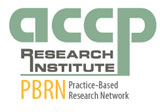
We are at an important point in our nation’s history. A poor economy, coupled with decades of high health care inflation, has resulted in extreme economic pressures that threaten the very fabric of the health care system. To be considered a solution to these health care problems, providers have been challenged with improving the quality of patient care without increasing overall costs. Clinical pharmacist practitioners may be in an ideal position to achieve this goal.
Although it is generally acknowledged that clinical pharmacists are highly qualified practitioners who can play an important role in improving medication use, there is considerable competition for this role from other practitioners. The added complexity of coordinating care and the need to provide care at a lower cost interfere with adding another professional to health care teams. Although the impact on patient outcomes is usually not known, health services can often be provided using lower-cost labor, and the inability of clinical pharmacists to bill and generate profits exacerbates this practice. As such, clinical pharmacists have become an integrated team member in only a few select medical fields or in select geographic areas.
There is plenty of evidence supporting the impact of clinical pharmacists on patient care teams. However, this research often does not address the issues of efficiency raised above. Furthermore, much of the research has been done in a selected population, with small sample sizes, and in specialized academic settings. The literature likely suffers from considerable publication bias, as analyses that do not show benefit are rarely published. Opponents of the inclusion of clinical pharmacists on patient care teams can often easily cite the lack of external validity of these studies as a critical limitation. Larger, practice-based studies are needed to generate evidence of the effectiveness and cost-effectiveness of clinical pharmacist activities. More detailed information is required to be able to assess differences between practices and identify ways to make clinical practices more efficient. This same detailed information on what pharmacists do can also inform decision-makers regarding the clinical pharmacist activities that are crucial to optimizing patient care and the activities that are value-added.
Recognizing the need for a new direction in the research agenda, the ACCP Practice-Based Research Network (PBRN) is undertaking an initiative that will help delineate the differences among clinical practices. Essentially, we are developing a plan to address the question “Of everything a clinical pharmacist does, what are the most important activities that lead to improved patient outcomes?” Answering this question will allow us to develop high-quality, efficient patient care services. The answer to this question should also allow us to identify why a clinical pharmacist is the appropriate health professional to improve medication use. Finally, answering this question will help set the agenda for educating and training effective future clinical pharmacists.
In developing the ACCP PBRN’s research agenda, some important considerations made advancing the research on clinical pharmacist activities a priority. In the following paragraphs, I present some of these points for your review and comment.
There are important differences between practice standards and best practices. Practice standards are defined as a minimum acceptable level of practice and are often widely adopted by health care systems. Best practices are well-defined procedures known to produce near-optimal results. However, best practices may not always be efficient or sustainable. The research being developed by the PBRN will focus on identifying sustainable practices that produce positive outcomes efficiently. From a plethora of published studies assessing clinical pharmacist practices, we know that the inclusion of clinical pharmacists on the care team generally leads to improved outcomes. However, some of the most thoughtfully designed research has failed to show a benefit to clinical pharmacist services, indicating the presence of important unmeasured factors that may influence patient outcomes. The problem is, we don’t really know what a clinical pharmacist does that has the greatest impact on the health of patients. We need to identify the activities, characteristics, or traits that lead to better outcomes. The PBRN is developing a method to measure some of those previously unmeasured factors.
Our laboratory space is the partnership the PBRN develops with you. Before the PBRN was initiated, investigators evaluating clinical pharmacist services continuously had to build their laboratories and watch them be dismantled at the end of the study. The PBRN is a laboratory in which to conduct comparative effectiveness research on clinical pharmacist services. We also anticipate that the results of this initiative will provide great benefits to the clinical pharmacist community.
There is tremendous interest from federal agencies (including CMS, AHRQ, and NIH) on identifying effective, forward-thinking practice models. Many pharmacist practitioners are already practicing in such models. The PBRN is interested in collaborating with a range of sites, from those currently working in innovative practices to those beginning their practices and interested in developing innovative practices in the future.
I hope that this article has been thought provoking and that it will encourage an ongoing conversation about the research direction the PBRN is taking and your potential role in helping to define that direction. Your feedback is welcome at [email protected].